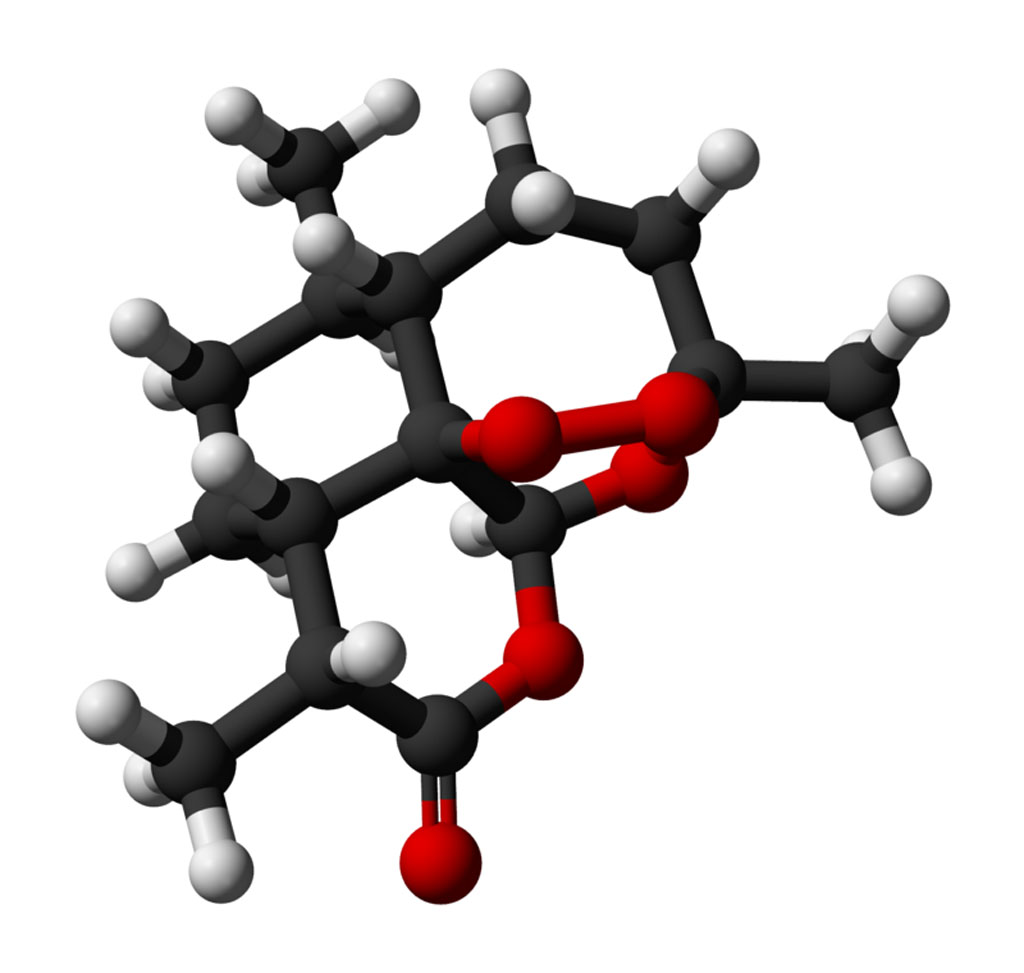Artemisinin Hastens TB Cure by Preventing Bacteria from Becoming Dormant
By LabMedica International staff writers
Posted on 05 Jan 2017
A team of microbiologists has found that a drug usually used to treat malaria can shorten the time needed to treat tuberculosis (TB) by preventing the causative organism (Mycobacterium tuberculosis) from entering a dormant, drug resistant state.Posted on 05 Jan 2017
The drug, artemisinin, which is isolated from the plant Artemisia annua, a sweet wormwood, is an herb employed in Chinese traditional medicine. A precursor compound can be produced using genetically engineered yeast. Artemisinin has been used for the treatment of Plasmodium falciparum related infections but low bioavailability, poor pharmacokinetic properties, and high cost of the drugs are a major drawback of their use, and there are signs that malarial parasites are developing resistance to the drug.

Image: A ball and stick model of artemisinin (Photo courtesy of Wikimedia Commons).
Investigators at Michigan State University (East Lansing, USA) examined the effectiveness of artemisinin for treatment of TB after it was identified during a screen of more than 540,000 compounds that were tested for ability to prevent M. tuberculosis from entering its dormant state.
The investigators reported in the December 19, 2016, online edition of the journal Nature Chemical Biology that M. tuberculosis became dormant in response to hypoxia, and that artemisinin inhibited the bacterial heme molecule, which functioned as an oxygen sensor. By disabling this sensor, artemisinin prevented the organism from sensing how much oxygen it was getting and blocked it from becoming dormant.
“When M. tuberculosis is starved of oxygen, it goes into a dormant state, which protects it from the stress of low-oxygen environments,” said senior author Dr. Robert Abramovitch, assistant professor of microbiology and molecular genetics at Michigan State University. “If M. tuberculosis cannot sense low oxygen, then it cannot become dormant and will die. When TB bacteria are dormant, they become highly tolerant to antibiotics. Blocking dormancy makes the TB bacteria more sensitive to these drugs and could shorten treatment times. Two billion people worldwide are infected with M. tuberculosis. TB is a global problem that requires new tools to slow its spread and overcome drug resistance. This new method of targeting dormant bacteria is exciting because it shows us a new way to kill it.”
Related Links:
Michigan State University














